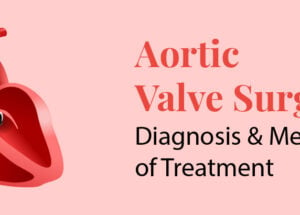What is Angina ? Symptoms, Causes & Treatment
December 10, 2022

Angina is a sensation of pain, pressure, or tightness in the chest. It occurs when a portion of the heart does not get a sufficient amount of oxygen.
Angina is a symptom, not a disease. When one or more of the coronary arteries become thin or clogged, it typically results in ischemia. It frequently occurs as a sign of coronary heart disease (CHD).
Angina by itself is not life-threatening, but it is an indication of heart disease and might resemble heart attack symptoms.
If angina strikes suddenly, does not go away, or does not improve with rest or medicine, seek medical assistance.
Types of angina
There are various types of angina, such as
Stable angina
Stable angina occurs when the heart works harder than usual, such as during exercise. Normally, it lasts for five minutes.
It has a typical sequence and might last for weeks, months, or even years. The symptoms can typically be reduced with rest or medicine.
Unstable angina
Unstable angina does not have a predictable sequence and usually strikes while you are at rest. Atherosclerosis, which involves a blockage preventing blood from reaching the heart, is the primary cause.
The pain may develop with time and last for more than five minutes. Medication and rest may not be enough to reduce the symptoms. Unstable angina can indicate a possible heart attack. Anyone experiencing sudden angina should seek emergency medical attention.
Microvascular angina
The coronary microvascular disease can cause microvascular angina (MVD). This impacts the tiniest coronary arteries.
In addition to chest pain, a person may feel:
- Tiredness and low energy issues
- sleeping issues
- Breathing difficulty
- Stable angina is more transient than microvascular angina. It frequently goes on for more than 10 minutes and occasionally for up to 30 minutes.
- Variant angina
- Angina variants are uncommon. Prinzmetal angina, as it is also known, can occur when the body is at rest, typically at midnight or early in the morning.
- It takes place when the coronary arteries spasm. Cold exposure, stress, medications, smoking, or cocaine usage are examples of potential triggers. Although the condition is chronic, medicines can help manage it.
How to identity angina?
Symptoms of angina
Any of the following chest feelings can be a sign of angina:
- Squeezing.
- Pressure
- Heaviness
- Tightening.
- Across the chest, generally beneath the breastbone, with a burning or hurting sensation Frequently, the neck, jaw, arms, shoulders, throat, back, or teeth will all experience pain.
Other potential signs include
- Indigestion.
- Heartburn
- weakness.
- Nausea
- Perspiration
- Cramps
- Shortness of breath
- These symptoms can last for a while, depending on the type of angina.
Symptoms in females
esides acute chest discomfort, a female with angina, may also experience the following:
- Nausea and vomiting
- Exhaustion
- Loss of breath
- Abdominal pain
Treatments of angina
The following measures can be helpful:
- Giving up smoking
- Controlling weight
- Periodically monitoring cholesterol levels
- Taking breaks when needed
- Exercise on a regular basis
- Understanding how to manage or prevent stress
- Having a diet full of fresh produce, nutritious grains, low- or no-fat dairy products, and lean meats and other forms of protein
Causes of angina
In most cases, coronary artery disease is the primary cause of angina.
- The coronary arteries deliver blood rich in oxygen to the heart. The arteries effectively narrow as cholesterol builds up and hardens into plaques on the artery wall.
- Smoking and artery damage are two other factors that raise the risk of plaque deposition.
- It is more difficult for oxygen-rich blood to reach the heart when the arteries are narrowed. Moreover, plaques might disintegrate into clots that clog the arteries.
- The heart muscle cannot function correctly if oxygen can’t get to the heart through the blood. It results in angina.
Risk factors of angina
Angina may appear as a result of the following:
- Stress
- Excessive alcohol or recreational drug use
- Smoking
- Exposure to airborne particles
- Low level of exercise
- An unhealthy diet
- High levels of cholesterol
- Obesity or excess weight
- Genetics
- Heart disease, diabetes, low blood pressure, metabolic syndrome, and anaemia are all a few examples of the conditions
- Specific medical procedures and treatments
Diagnosis
A proper diagnosis is crucial since it can indicate whether a heart attack is likely to occur. The doctor might suggest one or more of the following tests if they think the problem is angina:
- Blood tests.to measure levels of sugar, protein, fat, and cholesterol
- An Electrocardiogram (EKG) to monitor heartbeat electrical activity and identify any oxygen lacking
- A stress test that includes moving around, checking your blood pressure, and getting your EKG
- A nuclear stress test to look for changes in the heart’s blood flow during exercise
- An X-ray of the chest to see the internal organs
- Using dye and unique X-rays, coronary angiography reveals the interior of the coronary arteries.
Prevention of angina
The following measures can help avoid angina:
- First, having a varied, nourishing diet, and being “heart-healthy.”
- Avoid or give up smoking
- Exercise on a regular basis
- Practice stress management techniques
- Cardiovascular disease and other symptoms of metabolic syndromes, such as high blood cholesterol, high blood pressure, diabetes, and obesity, should be treated consistently and effectively in people.
Who can diagnose Angina?
A cardiologist can assist in identifying the root problem and developing the best treatment plan.
People also Ask
What is the main cause of angina?
Angina is typically brought on by narrowing the arteries that carry blood to the heart muscles due to a deposit of fatty substances. It is known as atherosclerosis. An unhealthy diet, smoking, and lack of exercise can lead to angina.
Is angina a heart attack?
No, angina is not a heart attack. But it can lead to a heart attack if not treated.
What are the warning signs of angina?
Pain and discomfort in the chest are angina symptoms. The discomfort or pain in the chest could feel like
- Burning, Fullness, Pressure, or squeezing
- Arms, the neck, the jaw, the shoulder, or the back may all experience pain.
Other angina symptoms include
- Dizziness
- Fatigue
- Nausea
- Breathing difficulty
- Sweating
Does drinking water help with angina?
Yes, Drinking water helps with angina. Thrombosis frequently coexists with angina pectoris. As a result, drinking enough water may help reduce blood coagulation.







